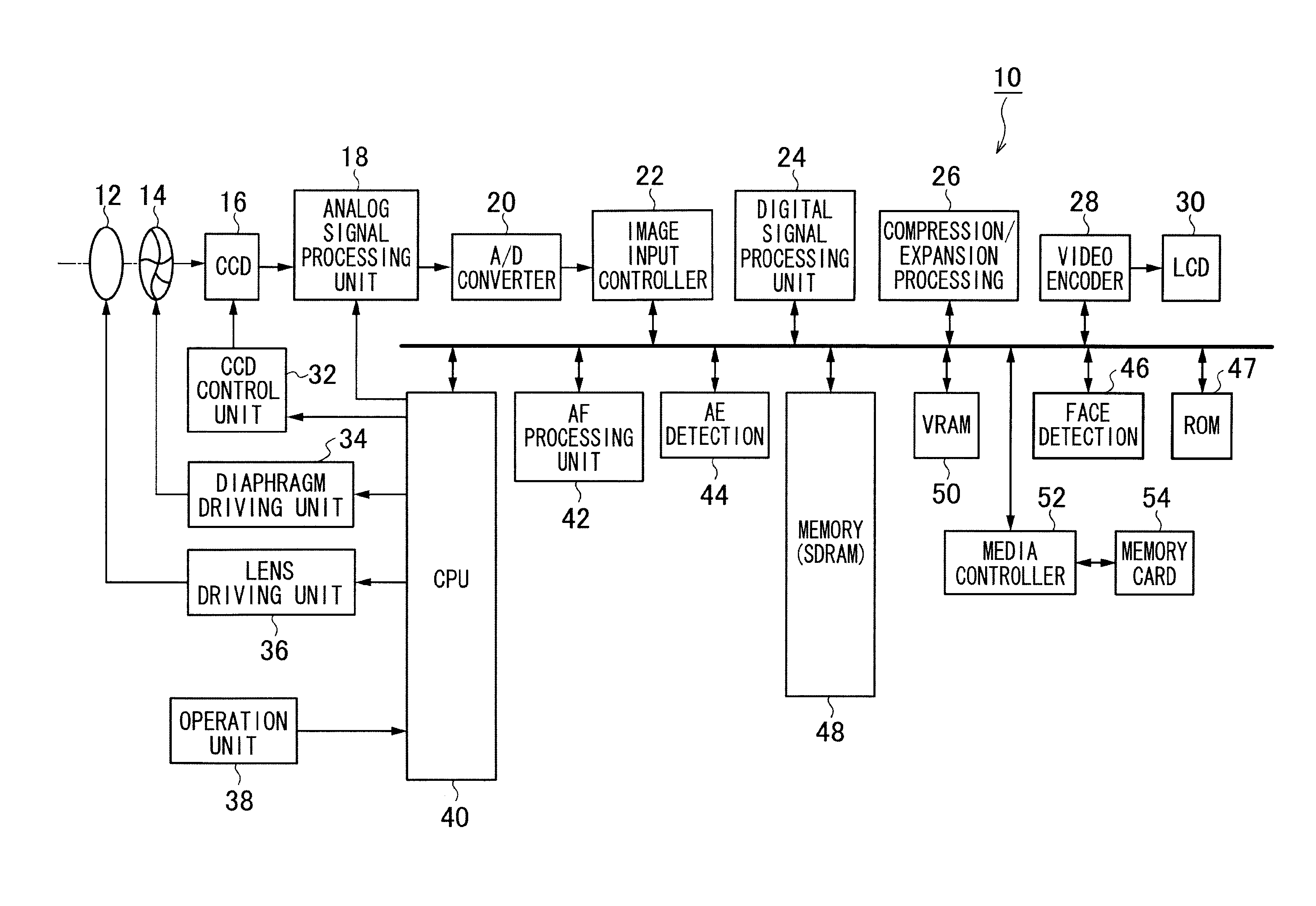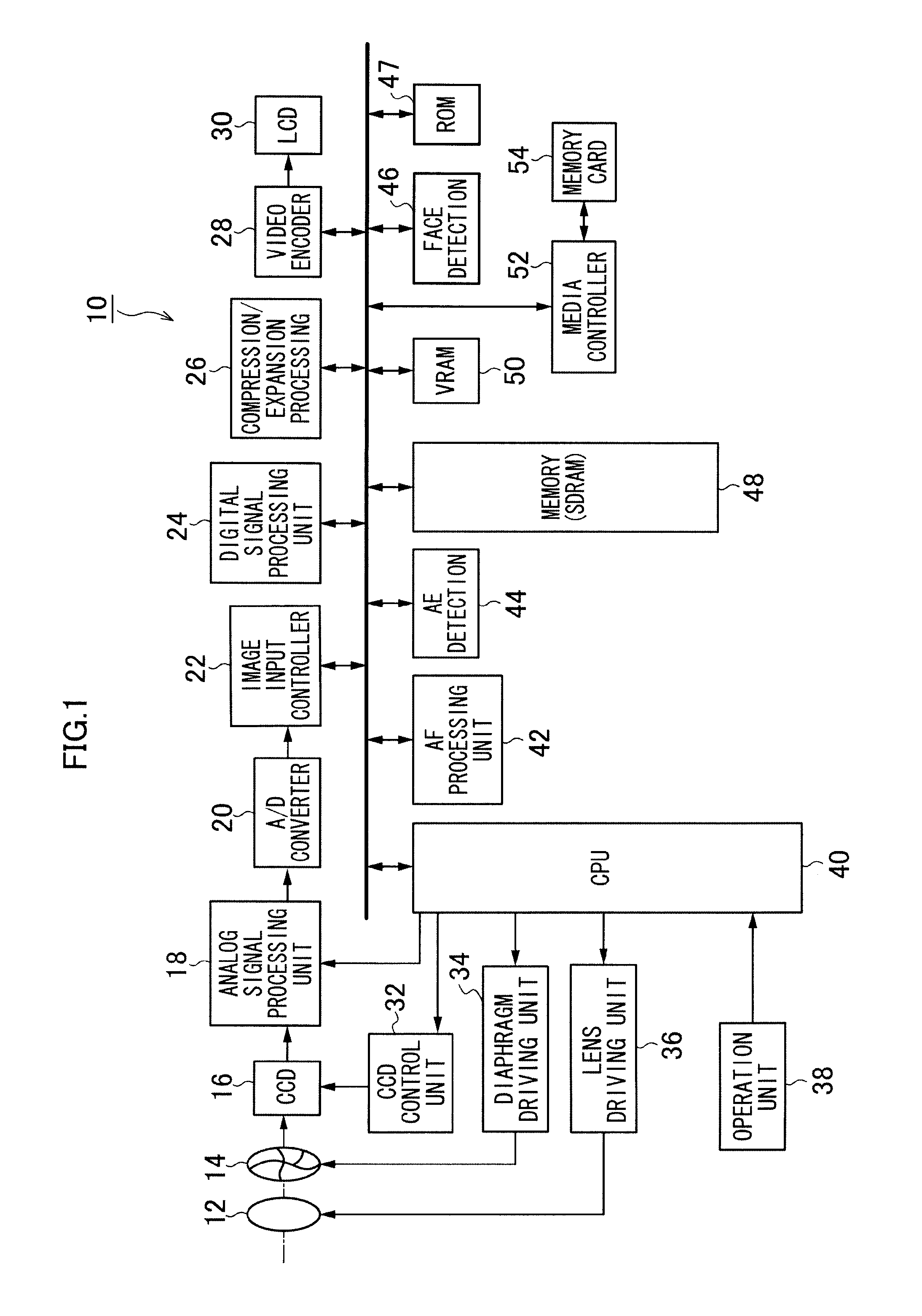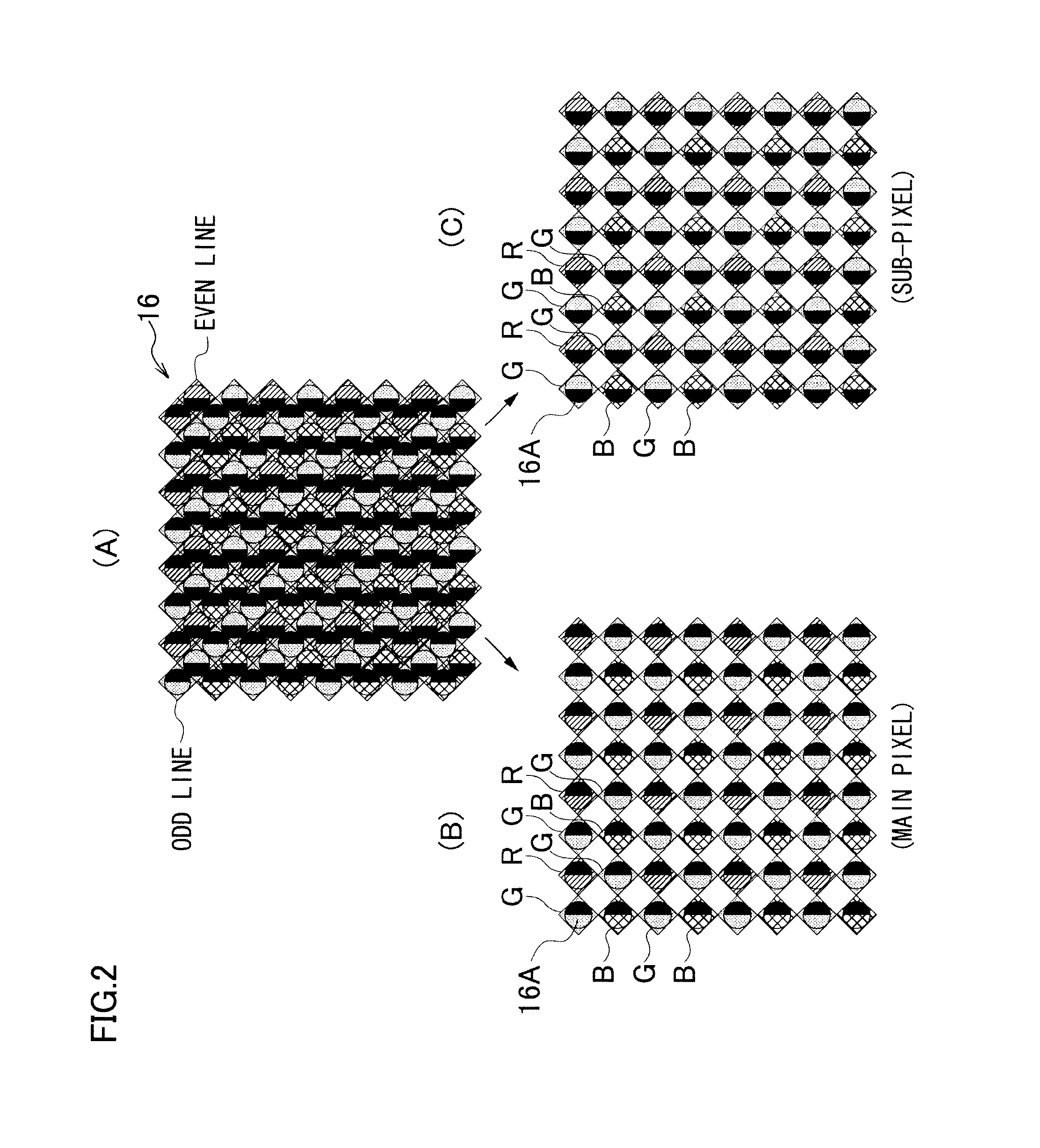Stereoscopic imaging apparatus
a technology of stereoscopic imaging and apparatus, applied in the field of stereoscopic imaging apparatus, can solve the problems of impossible stereoscopic viewing, and achieve the effect of not easily blurred, easy blurring, and not easily blurred
- Summary
- Abstract
- Description
- Claims
- Application Information
AI Technical Summary
Benefits of technology
Problems solved by technology
Method used
Image
Examples
first embodiment
[0083]The stereoscopic imaging apparatus 10 according to a first embodiment of the present invention will be described below.
[0084]FIG. 5 illustrates images respectively obtained when a far subject and a near subject are captured.
[0085]While in FIG. 5, a separation amount (a phase difference) between a main image and a sub-image of a main subject (a person in this example) at an in-focus position is zero, there occurs a phase difference between a main image and a sub-image of a subject corresponding to each of a foreground and a background of the main subject.
[0086]The separation amount of the far subject is decreased so that a stereoscopic effect is reduced, as illustrated in a portion (A) of FIG. 5. On the other hand, the separation amount of the near subject is increased so that stereoscopic viewing cannot be performed when beyond a mixing limit, as illustrated in a portion (B) of FIG. 5.
[0087]In the first embodiment of the present invention, an F-number of the diaphragm 14 is co...
second embodiment
[0096]FIG. 7 is a flowchart illustrating a photographing operation of a stereoscopic imaging apparatus 10 according to a second embodiment of the present invention. Steps common to those in the first embodiment illustrated in FIG. 6 are assigned the same step numbers, and hence detailed description thereof is not repeated.
[0097]The second embodiment differs from the first embodiment in that processes in steps S30 and S32 are performed, as illustrated in FIG. 7, in place of the processes in steps S14 and S16 illustrated in FIG. 6.
[0098]In step S30, a CPU 40 calculates an amount of parallax at a corresponding point between a main image and a sub-image, which have been acquired when a shutter button is pressed halfway. The amount of parallax is calculated by finding, based on one of the images (e.g., the main image), a corresponding pixel on the other image (the sub-image). As a method for finding the corresponding pixel, a block matching method, for example, can be used. A parallax ma...
third embodiment
[0110]FIG. 10 is a flowchart illustrating a photographing operation of a stereoscopic imaging apparatus 10 according to a third embodiment of the present invention. Steps common to those in the first embodiment illustrated in FIG. 6 are assigned the same step numbers, and hence detailed description thereof is not repeated.
[0111]The third embodiment differs from the first embodiment in that processes in steps S40 and S42 are performed, as illustrated in FIG. 10, in place of the processes in steps S14 and S16 illustrated in FIG. 6.
[0112]In step S40, a CPU 40 recognizes a main subject within a photographic angle of view based on an image acquired when a shutter button is pressed halfway. A stereoscopic imaging apparatus 10 according to the present embodiment includes a face detection circuit 46 for detecting the face of a person within the photographic angle of view. While the stereoscopic imaging apparatus 10 can recognize a person as a main subject, therefore, it can recognize a main...
PUM
 Login to View More
Login to View More Abstract
Description
Claims
Application Information
 Login to View More
Login to View More - R&D
- Intellectual Property
- Life Sciences
- Materials
- Tech Scout
- Unparalleled Data Quality
- Higher Quality Content
- 60% Fewer Hallucinations
Browse by: Latest US Patents, China's latest patents, Technical Efficacy Thesaurus, Application Domain, Technology Topic, Popular Technical Reports.
© 2025 PatSnap. All rights reserved.Legal|Privacy policy|Modern Slavery Act Transparency Statement|Sitemap|About US| Contact US: help@patsnap.com



